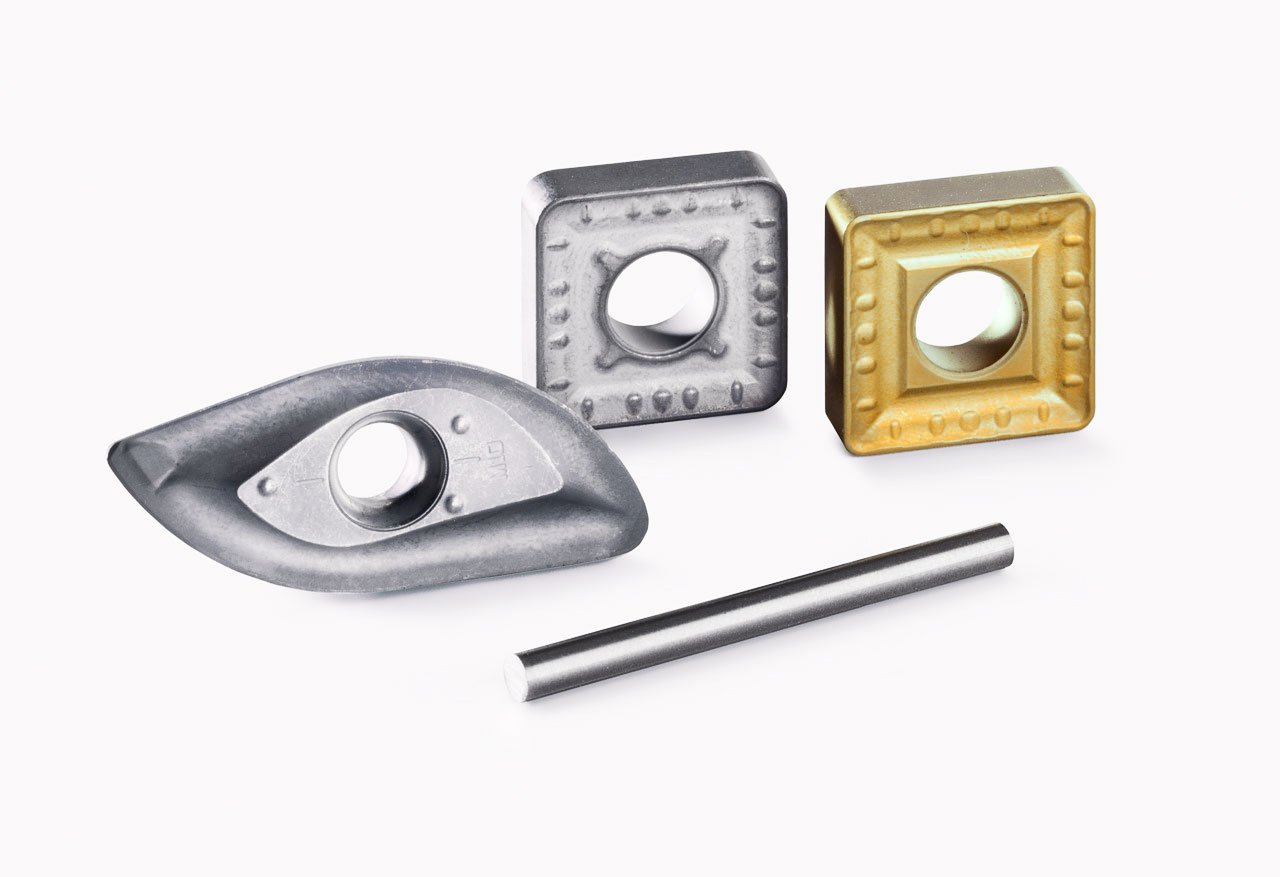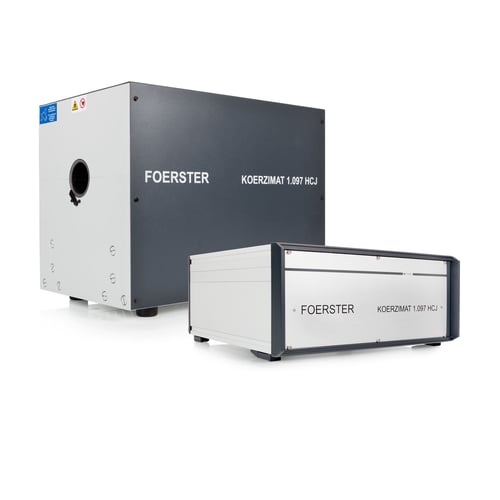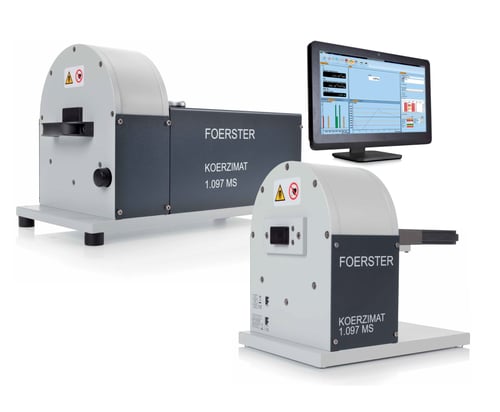Cemented carbides are a good example of the usage of magnetic properties in the industry.
High hardness combined with wear resistance makes cemented carbides attractive for various material processing applications, like mining, drilling, metal cutting, and forming, etc. The advantage of powder manufacturing, meaning the flexibility to shape various geometries, further contributes to broad usage and good customization of cemented carbides.

Fig.1: Cemented carbides
Cemented carbides are composite materials that consist of non-ferromagnetic hard carbide particles (e.g. tungsten carbide) and a ferromagnetic binder phase (e.g. cobalt). After pressing them into required shapes, the green compacts are sintered at higher temperatures (up to 1500 °C). Due to the presence of the cobalt phase, semi-finished cemented carbide parts can be easily tested for their ferromagnetic properties. The determination of magnetic parameters provides manufacturers with valuable information on the material structure that has an impact on the final mechanical properties of materials.
For more information about "Magnetic properties" please click here.
Material manufacturers often classify cemented carbides by grain size. This parameter serves as an indicator of hardness as well as flexural and compressive strength. Monitoring the sintering process involves comparing the grain size before sintering and afterward. There is a correlation between the grain size and the magnetic parameter coercive field strength. By measuring the coercive field strength on batch samples, it is possible to determine the grain size of the carbide quickly and non-destructively. This in turn provides inferences about the material’s resistance and hardness. For this reason, one of the prerequisites for good quality management in powder metallurgy is the ability to determine the coercive field strength with precision.
.jpg?width=1597&name=Analysis%20of%20cemented%20carbide%20structural%20properties%20using%20coercitivity%20field%20(HCJ).jpg)
Fig.2: Analysis of cemented carbide structural properties using coercitivity field (HCJ)
Additionally, cutting tools must be able to withstand high loads. An assessment of the carbon balance during and after sintering provides an important quality parameter for this. When under-carburization occurs in the sintering process, the resulting ‘eta’ phase can make the tool brittle, leading to breakage. In the case of over-carburization, the carbon precipitates out, which can result in insufficient strength and wear resistance and, again, tool breakage. On the other side, the carbon balance has a complex influence on magnetic characteristics of the binder phase, such as magnetic saturation. As a result, the carbon balance is monitored by comparing the actual magnetic saturation with the nominal value.
With the KOERZIMAT HCJ and MS measuring systems, both coercive field strength and magnetic saturation can be determined quickly, precisely, and independently of shape.

KOERZIMAT 1.097 HCJ/J-H

KOERZIMAT 1.097 MS
Contact our experts and discuss your measuring tasks. We are glad to help you!